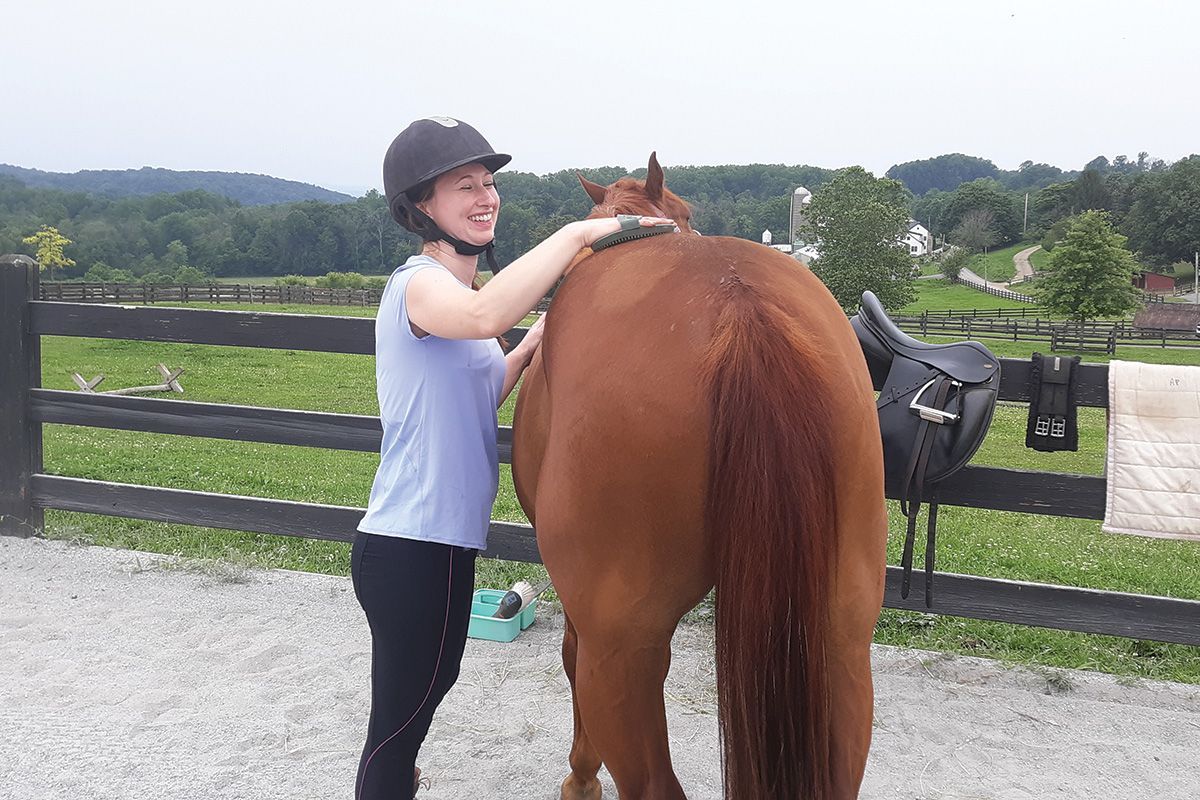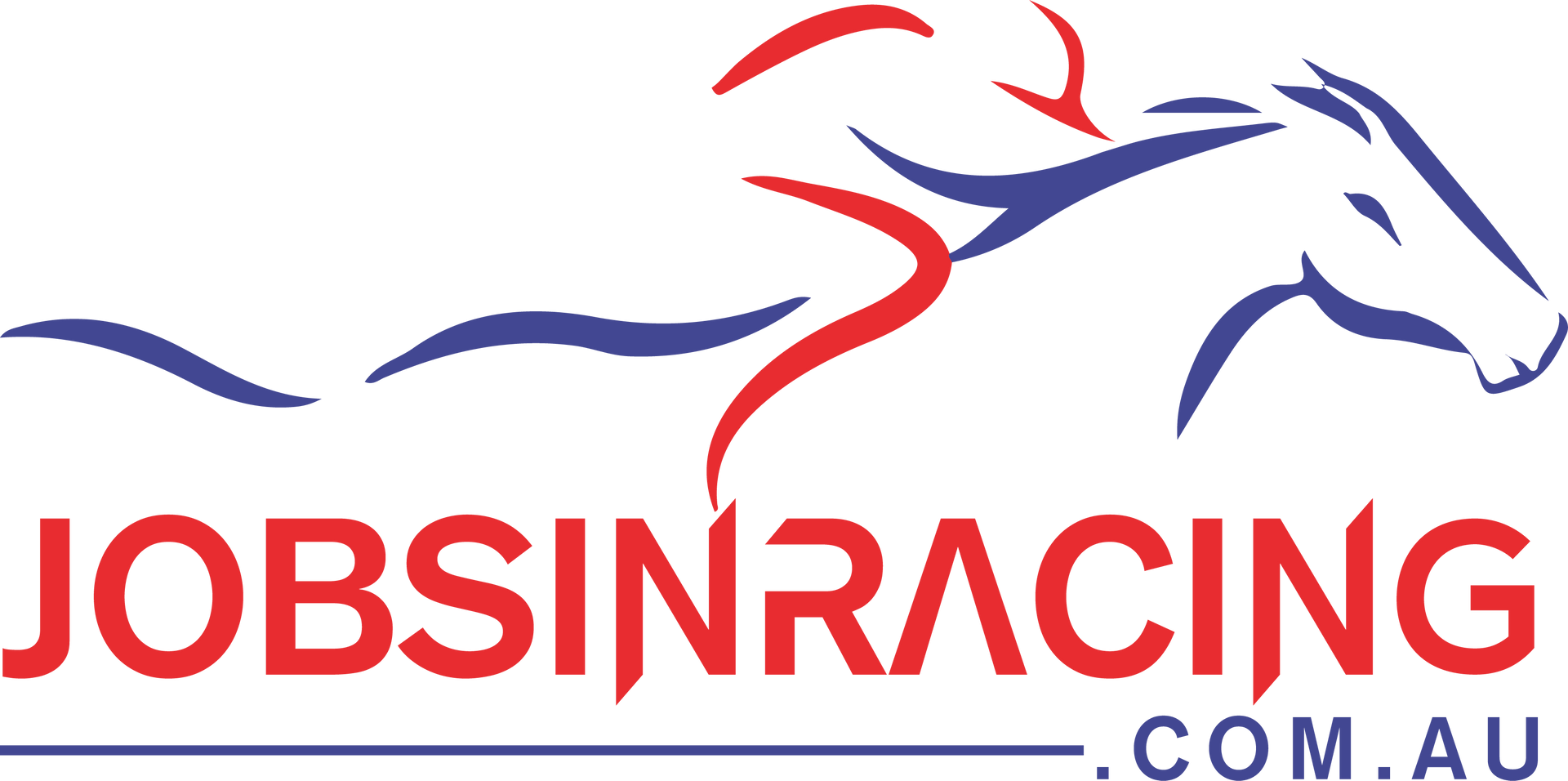Common Off-Track Thoroughbred Injuries
If you’re adopting an OTTB, find out which common racing injuries are most concerning when planning a second career.
In addition to finding the right personality and ability when searching for your next equine partner, oftentimes it feels like you need a Ph.D. to decipher horse-health records, old injuries, and how they might impact a horse’s future athletic career—and an off-track Thoroughbred, or OTTBs, can come with their own set of unique issues and injuries.
By the time most racehorses are 3 years old, they’re in peak physical condition and have been trained to do one job incredibly well: Run. Like top-tier human athletes, these horses are susceptible to a range of sports injuries. Some of these can affect a horse’s future athletic career and others are merely cosmetic, but the key to any injury is its severity and how well it is rehabilitated. With the guidance of a knowledgeable veterinarian who has experience with these types of injuries and who understands your (realistic) skills and goals as a rider, you’ll be well on your way to choosing the perfect off-track Thoroughbred partner for your riding sport of choice.
Splints
Some retired racehorses have bony lumps on their lower legs. These “splints” are often found on the inside of the front legs. They are the result of an injury to the splint bone or to the ligament that runs in between the splint bones.
Presentation: Active splints are hot and swollen and may cause lameness.
Treatment: Time off, anti-inflammatories and possibly cold hosing could help this common off-track Thoroughbred injury.
Athletic Prognosis: Unlimited, once the splint is “old and cold.”
Suspensory Ligaments
The strain that racehorse legs experience while training can sprain or tear the suspensory ligament, which runs from just below the knee or hock to the back of the cannon bone, resulting in desmitis.
It’s not just physical strain on the tendon that causes injury, notes Leandra Cooper, facility manager and head trainer at New Vocations Racehorse Adoption Program in Lexington, Ky. She rehomes over 200 retired Thoroughbred racehorses each year. Farriery is also a component. Most racehorses are shod with a long toe and low heel, which adds strain to the ligament.
The rehabilitation process and future athletic soundness are dependent on where on the ligament the injury is located and its severity.
Presentation: Swelling, heat and pain at the site of the strain or tear. Lameness can vary from mild to moderate and is most visible on soft ground; it often comes on suddenly and abates after a few days. Severe lameness is typically present in suspensory tears.
Treatment: Time and rest.
“The worst thing about these injuries is that the horses don’t read the book on how long it should take to heal,” says Shelley Mann, executive director of the Secretariat Center racehorse adoption center located at the Kentucky Horse Park in Lexington, Ky. “Some [horses] need 30 days and they are good to go, and sometimes it takes six months or longer to heal.”
Athletic Prognosis: The size of the injury and the quality of the repair are the greatest predictors of future soundness within certain disciplines, says Rhodes Bell, DVM, Dipl. ACVS-LA, of Park Equine Hospital and the primary veterinarian for New Vocations in Kentucky. Small branch injuries that are given enough time to rehabilitate are less likely to affect the future soundness than is an actual tear of the ligament. Properly rehabbed and brought back to condition, horses with desmitis are often able to jump small jumps.
Bone Chips
Osteochondral fragments (also called “bone chips”) in retired racehorses are exactly what they sound like: fragments of bone that have broken off in a horse’s joint. The majority of chips Cooper sees involve the knee and fetlock.
Chips can vary in size and position; their location can impact movement and cause pain and lameness. Chips that are “floating” can affect the surrounding anatomical structures (by shredding them). Chips that are not floating are often a non-issue and have little to no impact on the horse’s anticipated athletic ability.
Presentation: From inflammation without lameness (if the chip is not involved with other structures) to pain and lameness (if the chip is harming other structures).
Treatment: Chips that are in an articulating joint and causing damage will need to be surgically removed. A lameness exam should be performed on a horse to determine if a fragment is bothering him. If the horse is demonstrating lameness in a limb with a chip, the joint is often blocked and the horse’s comfort level reassessed.
“If the intra-articular block resolves the lameness, then I would recommend surgical removal,” says Bell. “If it doesn’t [make the horse sound], then I will keep looking for the cause [of the lameness].”
Bell will inject horses with hyaluronic acid or anti-inflammatory when surgical chip removal is not an option.
Athletic Prognosis: The level of athletic potential is often directly correlated to the location of the chip, especially in relation to the joint and articulating areas, as well as to how it is addressed. If the chip is not floating or has been removed early, horses have a good chance to have unlimited second careers, says Mann. However, once a horse has joint damage from a chip, he may develop arthritis in that area, which could potentially limit his future athletic endeavors, says Cooper.
Sesamoiditis and Fractures
Horses have two sesamoid bones at the back of the fetlock; there are multiple tendons that run over and between these bones. Repeated strain on these bones can cause fractures in various locations, which are treated differently and can cause vastly different athletic outcomes.
Presentation: Depending on the affected area, the horse can be severely lame, or he may only be off after he is worked intensely; he may be sore only when palpated or flexed. Visible inflammation and heat are possible.
Treatment: It depends on what area of the bone is affected. Sesamoids that fracture near the top and bottom of the bone respond well to surgery to remove the affected area.
Fractures that are lower in the bone that involve more of the suspensory insertion require more significant rehabilitation, says Bell.
Mid-body (in the middle of the bone) sesamoid fractures are best addressed with surgical reconstruction with lag screws, he notes.
Horses with sesamoid fractures should rest and have their training schedules reconfigured to alleviate concussion on the structures. A shoe that eases breakover may be beneficial to reduce strain on the sesamoid bones and ligaments.
Athletic Prognosis: This depends on the area of sesamoid affected.
“Some horses do great [once they are properly rehabbed], though we tend to suggest flat-only careers for those horses,” says Mann. “Others struggle with soundness due to damage to surrounding tissues and possible arthritis.”
These horses are best-suited to be companion horses if they can be made pasture sound. The prognosis for horses with hardware is directly related to the amount of collateral damage and how well the articular surface is reconstructed, says Bell.
Cooper notes that fractures at the base have the most risk for suspensory and joint involvement and are also those with the most limited career options; mid-body fractures have a fair prognosis for athletic careers; high breaks have a decent prognosis if there is no additional soft-tissue involvement.
Condylar Fractures
A condylar fracture is a common cannon bone injury caused by repetitive strain. The fractures are categorized into incomplete and non-displaced (meaning the bone fragment hasn’t pulled away from the cannon bone and is in the original location) and complete and displaced, meaning the fragment has moved away from the cannon bone. These injuries used to be considered a death knell for all athletic endeavors. However, advances in equine medicine have made the ability to return to full work a possibility.
Presentation: Horse will be acutely lame; affected area will be swollen and hot. A bone fragment may be visible under the horse’s skin.
Treatment: Often includes surgery to stabilize the break, anti-inflammatories, rest and time. Some fractures can be treated without surgery, though this is rarer.
Athletic prognosis: Dependent on rehabilitation.
“Collateral damage that occurs at the same time as the fracture typically predicts the [athletic viability] outcome,” says Bell. “A horse that suffers significant soft-tissue injury along with loss of cartilage within the joint would not be expected to have the same outcome as a horse with a simple, lateral, incomplete, non-displaced condylar fracture repaired using lag screw fixation.”
Also important to the joint’s long-term health is how well the articular surface is reconstructed. Some horses with condylar fractures have no career limitations; others cannot even be made pasture sound.
Mann notes that the Secretariat Center typically sees condylar fractures after screws have been inserted and the horse is racing again. Though these types of injuries in an off-track Thoroughbred often look intimidating, horses with condylar fractures often to do well once healed, Mann says.
Source: https://www.horseillustrated.com/common-ottb-injuries


